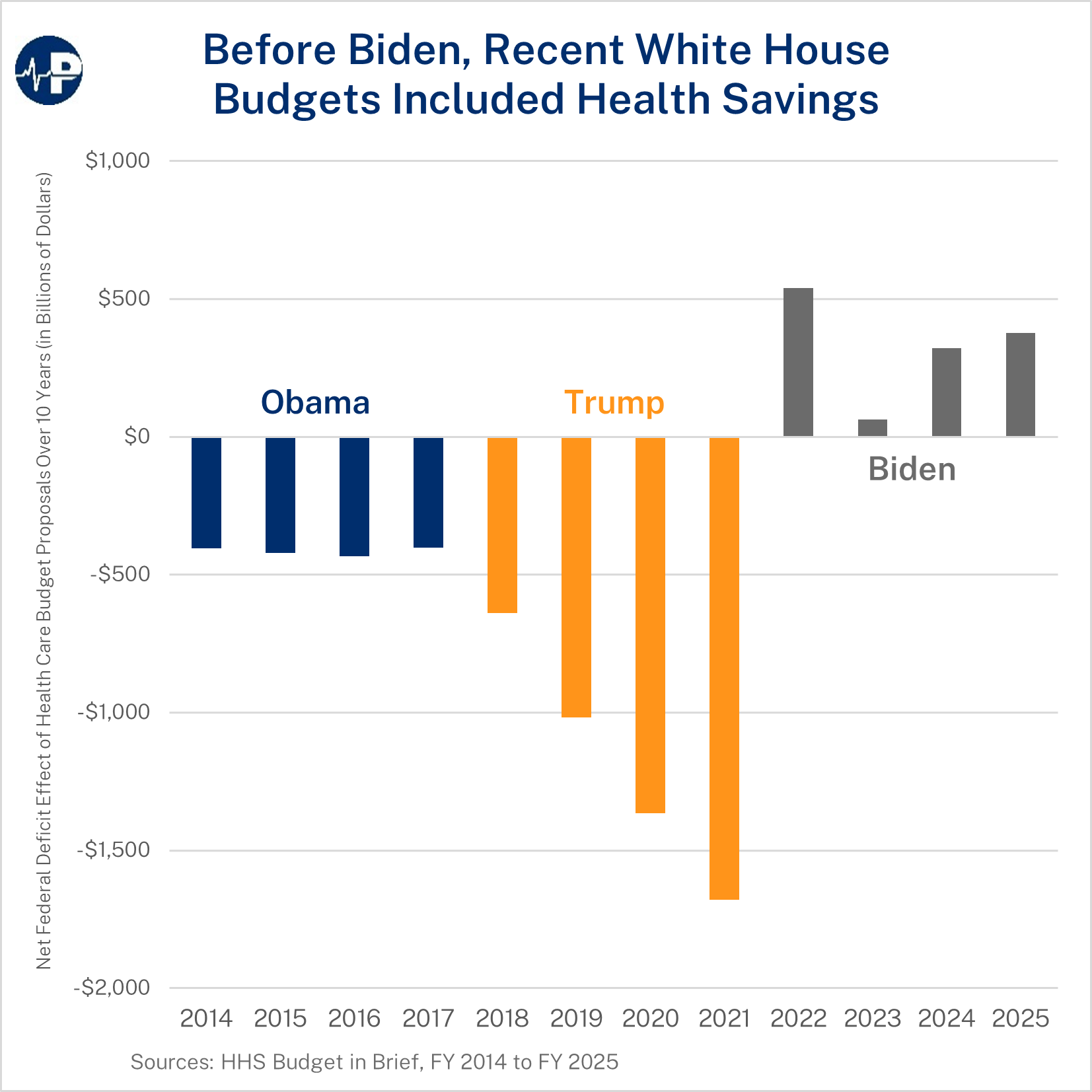On March 11th, President Biden released the final budget request of his term. These annual White House budgets include a policy wish list that can provide important insight into an administration’s priorities. Unsurprisingly, the Biden budgets have envisioned major expansions of federal health programs. But what is unusual about them is that their proposed health savings do not offset new health spending. As a result, the Biden budgets have federal health care spending increasingly crowding out other public priorities and gobbling up economic output.
Every budget released under the Trump administration and President Obama’s second term included net savings to federal health programs managed by the Department of Health and Human Services. The Obama budgets proposed Medicare savings, with a portion of those savings often redirected to Medicaid and CHIP. The Trump budgets proposed savings in major federal health programs, with the most significant reforms being to Medicaid and Affordable Care Act (ACA) subsidies to health insurers.
By contrast, the Biden budgets exacerbate the already unsustainable fiscal trajectory of federal health programs. The latest budget would increase such spending by about $390 billion over 10 years. While most of President Biden’s budgets proposed some savings to Medicare (largely by expanding Medicare price controls on drugs), those are more than offset by increased spending on Medicaid, ACA subsidies to insurers, and other areas.
White House budgets have significant leeway on what policies they can include and how they estimate their fiscal impacts, so it is notable that the Biden administration has identified relatively few areas worth trying to pare back spending – it does not even include policies with past bipartisan agreement between the Obama and Trump administrations, such as site neutral payments in Medicare.
Along with interest payments on the debt, health care programs are the fastest growing component of federal spending. With proposals that increase federal health program costs, the president is laying out an agenda for higher future taxes, inflation, and interest rates.



